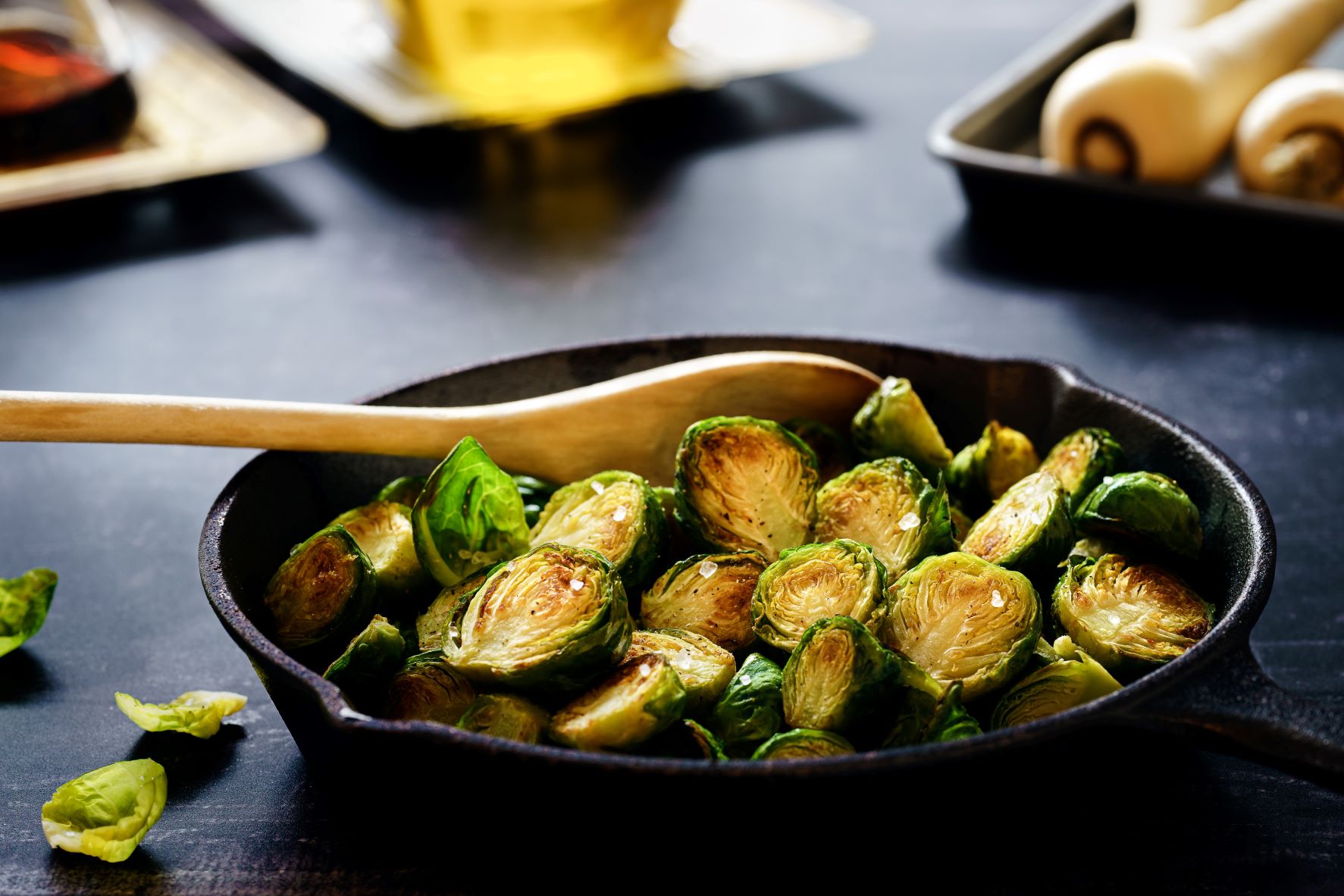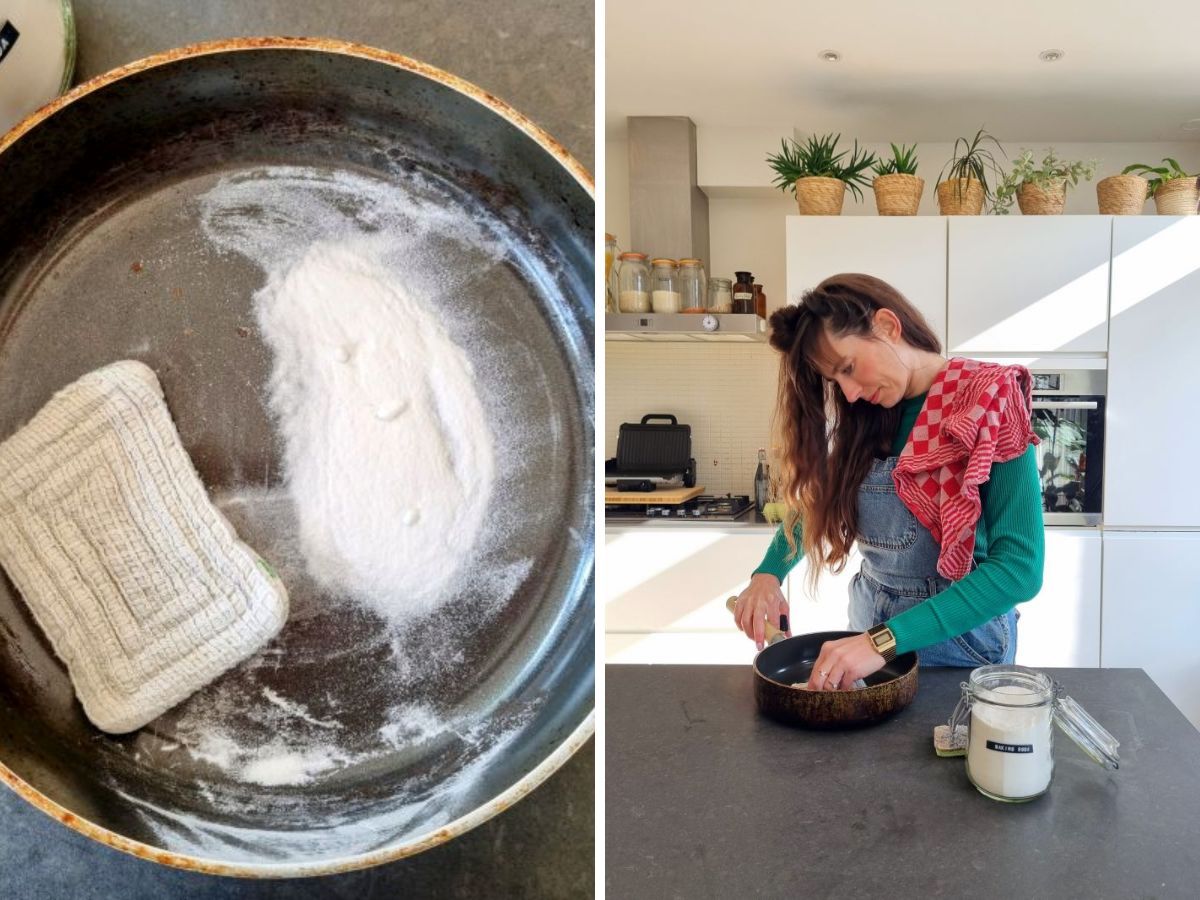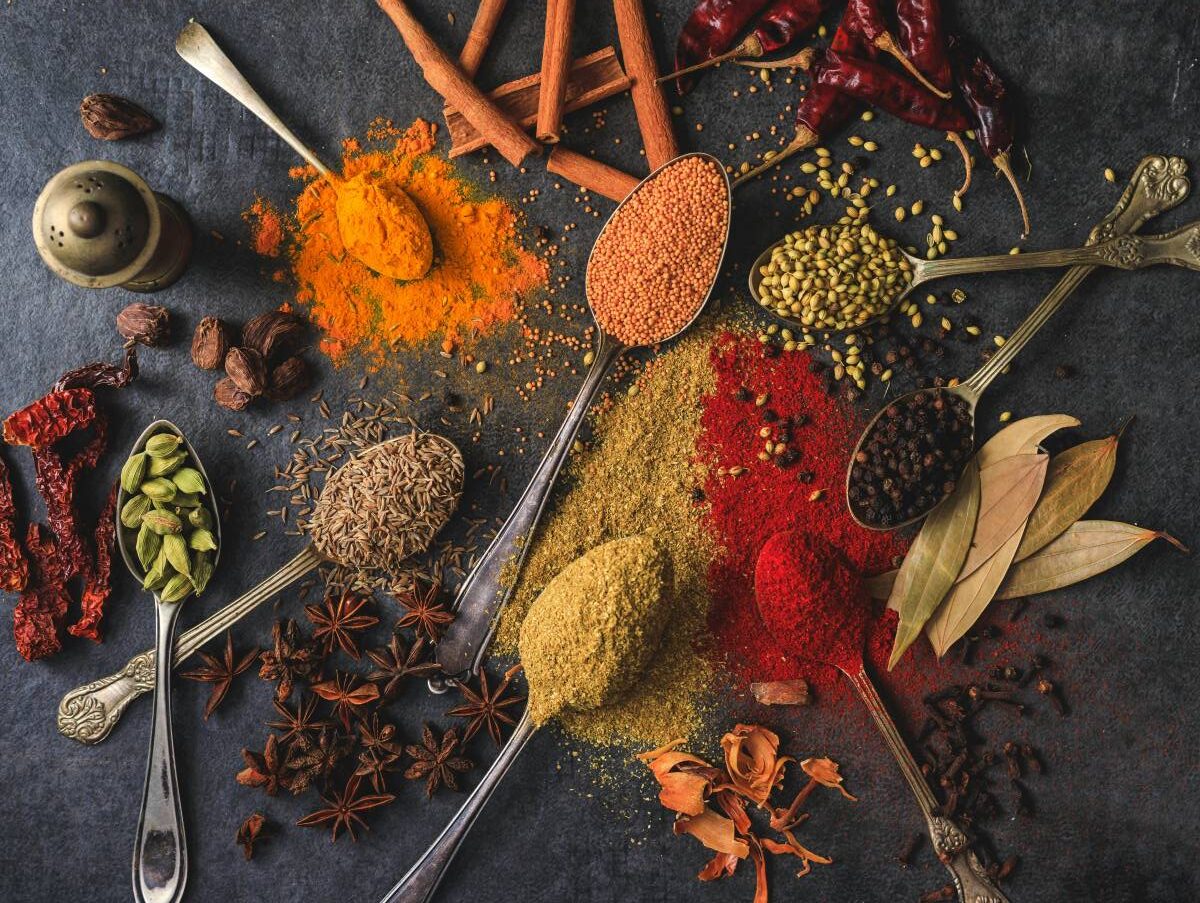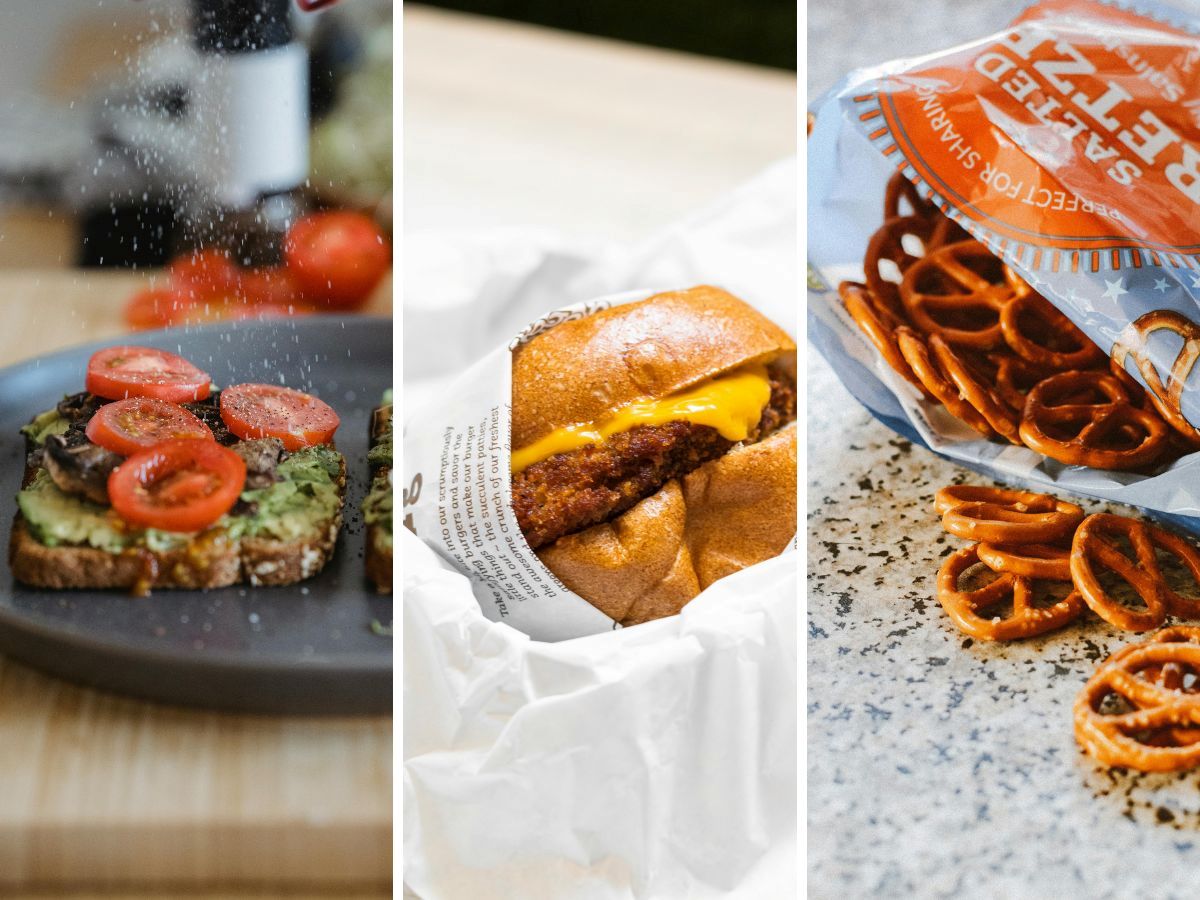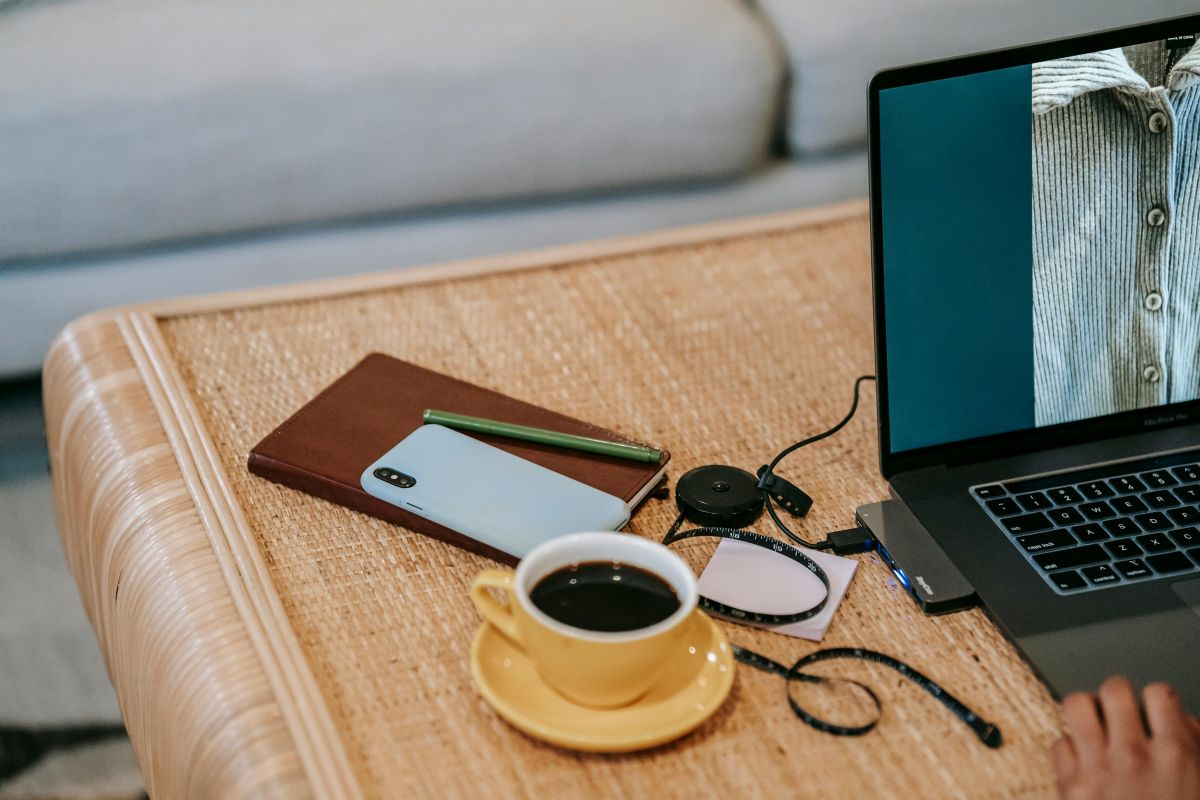Pans with certain non-stick coatings are harmful to the environment and possibly not too good for your health either. After watching an episode of Keuringsdienst van Waarde About panning and seeing the film Dark Waters I had had enough: I decided to replace all our old pans with worn non-stick coating for new eco-friendly PFAS-free pans. How did the selection process go?
Eco-friendly pans: where do you start?
The bad feeling about my old pans - with worn non-stick coating - started after seeing the TV programme Keuringsdienst van Waarde and the film Dark Waters that I watched shortly afterwards. I was shocked to hear the programme makers‘ conclusions and the film Dark Waters did not have a pretty ending either. I looked at my pans, they did not look the best and especially very old. I resolutely decided to get rid of the entire collection of old pans. Of course, I had an ambivalent feeling about this, because it was a sizeable collection of pans that I still used ’fine' on a daily basis. Wasn't it a bit of a waste to get rid of them all? And wasn't it also a bit late? That non-stick coating that used to be on them, which had disappeared ages ago....
In this article, I will take you through my pan quest. I will tell you what I found out and what choices I finally made, pan tips that is. I start at the beginning, with the non-stick coating, which is made of PFAS. You've probably heard of it before. And what you heard was probably not very good.
What is wrong with PFAS?
PFAS is a collective name for a number of chemicals with unique properties: it can repel water, dirt, dust or grease. PFAS can be found in all kinds of products: from rugs to mackintoshes and from pizza boxes to Teflon pans, i.e. non-stick pans. The aforementioned TV programmes prompted me to look into the potentially harmful effects of PFAS. I was extremely shocked. After all, I have been cooking with the same old Teflon pans since my student days - and I have not been a student for a long time. All of them pans with a worn non-stick coating. Where has that layer gone? I fear the worst... That can never be good. And the idea of my little son also eating out of these pans also made me feel tremendous guilt. How bad is it all? I looked into it.
This is what the government says about PFAS
‘PFAS are known to have adverse effects on human health. For example, the substances can affect the immune system, reproduction and development of the unborn child. PFAS can also have an effect on cholesterol in the blood, produce effects on the liver and cause kidney and testicular cancer. The substances can further be harmful to nature. They can cause problems for animals at the top of the food chain, such as birds and mammals.’
The National Institute of Public Health and the Environment
You can't avoid PFAS
What I also discovered: PFAS is really everywhere (in). It is not only in finished products, it is also used in industry. And so that's actually even worse news. Jacob de Boer, Professor of Environmental Chemistry, Has investigated that PFAS is in the blood of all humans. ‘Everyone in Europe, thanks to DuPont, has PFAS in their blood.’ So anyway, it is in our bodies and those of our children. A scary idea, but the guilt ebbs away a little that it is not (only) down to my student pans. This professor cites the discharge of PFAS by companies such as Chemours (formerly Dupont) as the biggest cause of the spread. ‘You could come into contact with PFAS through drinking water, food packaging materials and when you come into direct contact with the substance, such as through the air around Chemours in Dordrecht or when digging in contaminated soil.’
PFAS cannot be broken down easily and thus continues to roam our planet endlessly. In 2023, Europe will decide whether to permanently ban PFAS, but that does not seem to solve the problem, as particles from America and China will still come our way, the researchers said. We are not rid of PFAS for the time being. But in the meantime, we can choose our pans more sustainably.
PFAS in pans
So it becomes clear to me that how PFAS is exposed determines how harmful it is to the environment and health. A chemical dump from a large company is much worse than eating from a worn-out pan. The Ministry of Health, Welfare & Sport (VWS) claims that a Teflon pan poses no health risk when used normally. But what is normal use? I guess not my worn-out pans. On this, they say: ‘However, when heated above 250°C, the Teflon can disintegrate, producing harmful gases. In old pans, the layer can start to flake. Particles that come off the Teflon layer can end up in the food. This is undesirable but not harmful. The substance cannot be absorbed or digested by the body and it leaves the body in unaltered form.’ Let's stick to that. I so intensely hope they are right .
Teflon pans from before 2015
I deliberately explain a bit more about PFAS above to clarify that an old pan with a broken non-stick coating is not the only PFAS you expose yourself to. You can get despondent about that because your pans are just a tip of the iceberg. And yet, I did want to replace them. My old pans are still from my student days, so these were definitely bought for the year 2015. That was an important year because since then, Teflon pans (also known as PTFE pans) are no longer allowed to be sold containing the harmful adjuvant PFOA. This substance is officially linked to several cancers. Since 2015, only Teflon pans/PTFE pans containing other additives (called GenX) have been on sale. Good news? Neh, not quite either unfortunately.
Teflon pans from after 2015
Post-2015 Teflon pans/PTFE pans are still officially labelled as safe and are also still available for sale. Only worrying reports are also circulating about these pans. Consumer Association site reported about domestic birds dropping dead from teflon fumes and people with sensitive airways experiencing symptoms. Indeed, there is evidence that animals and people sensitive to it can experience symptoms, often temporary shortness of breath. For this reason, the advice is also not to let a Teflon pan get too hot and certainly not if there is nothing in it. Again, this does not sound very healthy. So even teflon pans made after 2015, because of reports like this, I would be nice to get rid of them.
What is the best choice in PFAS-free pans?
Maybe - like me - you now want to replace your pan set. But where do you start? Because a new pan set is quite an expense. So I took advice from a cookery shop. Basically, it comes down to roughly five choices:
- Pans with ceramic non-stick coating
- Stainless steel pans
- Sheet steel pans
- Cast-iron pans
- Enamel pans
My eco-friendly pans without PFAS
Expensive but top: the cast iron pan
In Hilversum, I visited Oldenhof cookery shop because for my birthday my father allowed me to choose an eco-friendly pan. The salesman recommended going for a cast-iron frying pan from Le Creuset, the Rolls-Royce among pans. This pan will last for a lifetime and this is also the only pan that won't warp if you ever decide to switch from gas to induction. But this pan comes with a hefty price tag: over 200 euros. Since this is the most durable buy, I picked this pan for my birthday (and added some myself to spare my dad). See more about Le Creuset.
Good value: pans with ceramic non-stick coating
Replacing all pans for cast-iron ones from Le Creuset was a bit too much for me. So I started looking for an affordable pan. I ended up at pans with a ceramic non-stick coating from GreenPan. I hesitated for a long time because I came across varying stories about this pan online, but experts assured me that the negative stories mostly stem from experiences with the first generation of pans. Since then, the pan has been fully developed and improved so much, which may explain the varying reactions (it's a bit like comparing the first iPhone with the latest one). And I suspect this must have been it too, because we are super enthusiastic about this pan set. It doesn't cake, cleans easily and the price is attractive too. Our beautiful turquoise Mayflower pan set consists of four pans (and some more accessories such as spatulas) costs 129.99 euros. These pans are suitable for all heat sources.
I approached GreenPan for a review set after deciding I wanted to go ceramic. I am writing this article not on their behalf and is also not part of a collaboration. See more about GreenPan.
Stainless steel wok Macao from WMF
From St Nicholas, my husband has a large stainless steel wok Macao received from the solid brand WMF. This giant pan has long been on his wish list. This is an all-stainless steel pan and is suitable for all heat sources and - like the other pans in our new collection - also dishwasher-safe. The pan comes with inset and draining rack. David makes the tastiest vegetarian and vegan Asian meals with this. The pan is not cheap (around 107 euros).
Cast iron frying pan by Royal Kempen and Begeer
Through Albert Heijn, my in-laws saved up for a cast-iron frying pan from top brand Royal Kempen and Begeer. They were able to buy this one for us at a big discount and it is perfect for roasting, stewing and simmering dishes. This pan is suitable for all heat sources. See more about Royal Kempen and Begeer.



Our new pans: Stainless steel wok from WMF. casserole from Le Creuset, GreenPan with ceramic non-stick coating,
Maintaining PFAS-free pans
Finally, I have some basic tips for maintaining the pan. Also not entirely unimportant!
- The cast iron pan should be used for the first time briefly burn in.
- Although the GreenPan can just go in the dishwasher, we have become extra careful. We always wash the pans by hand: with a little soapy water and a soft brush, you can wipe the ceramic pan clean in no time. Note: a cast-iron pan may never in the dishwasher.
- We always use wooden and GreenPan spatulas in the pan, avoid sharp objects such as knives at all times. You get those spatulas when you buy a set.
- We keep the pans neatly organised in a drawer - we don't stack! For this, David has hammered together a special pegboard. See how he did it here.
- We discarded the old pans in the residual waste, as prescribed by Milieu Centraal.
More useful green tips from thegreenlist.nl
- Caked pan? This will get your frying pans shiny clean again!
- Another eco-friendly pan tip: SOLA.
- DIY tip: store pans and save space in the kitchen.
Photo credits: Sebastian Coman Photography (Pexels) (main image), thegreenlist.nl.

